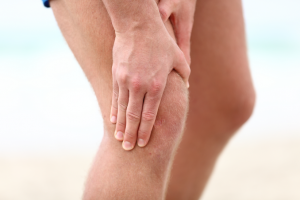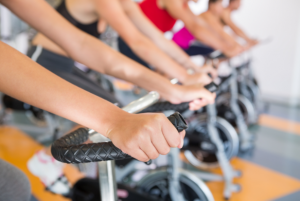Frequently my patients ask me about being able to manage heart health and osteoarthritis at the same time. Heart health is extremely important, but it can be struggle to keep up with, especially when paired with issues that may affect mobility.

According to The American Heart Association, being physically active is essential in the prevention of heart disease. Before committing to an exercise routine, be sure to speak with your primary care doctor or cardiologist to make sure there are no medical limitations for you.
The AHA recommends at least 150 minutes of moderate exercise, or 75 minutes of vigorous exercise, per week. That may seem like an intimidating amount at first, but you can break down your exercises into daily segments to make them more manageable.
Low-Impact Exercises for Heart Health
Heart health and osteoarthritis can be a tricky pair; you should be wary of exercises that put too much weight on your kneecaps. A few forms of exercise that won’t be too strenuous include, cycling, swimming, yoga, and light jogging.
Spin classes are a great way to get into cycling. The  bikes are adjustable to all shapes and sizes of people, the classes are timed so you know when you are starting and when you are finishing, plus there is great music to motivate you during the workout. It
bikes are adjustable to all shapes and sizes of people, the classes are timed so you know when you are starting and when you are finishing, plus there is great music to motivate you during the workout. It
is also helpful that the classes are led by instructors, that way you know exactly what to do and how to do it. Research what kinds of classes are available in your area to find one that is right for you.
Another form of fitness to help keep your heart healthy is swimming. While not everyone may have access to a pool, if you do you should take advantage. Water is soothing for pain, and can help decrease levels of stress. It also has less of an impact on your bones and joints, which is particularly beneficial in the case of knee osteoarthritis.
Yoga and stretching in general are extremely beneficial forms of low-impact exercises. Yoga is versatile and you have the power to create a stretching routine that fits best with your schedule and your abilities. Not only will yoga help in terms of flexibility and strength, but it is also a great way to manage pain and stress.
Elliptical machines are another great resource for cardiac fitness. Even though you are using a machine, it is still important to mimic the actual motion of walking or running. In addition to your legs, you should also be swinging your arms to keep your heart rate up.
Monitoring Heart Health
So now, equipped with information on certain exercises specific to heart health, you may be wondering how you can tell if you’re really helping your heart. If you don’t own a fitness tracker or have a heart monitor, a simple way to gauge your workout intensity is to make sure you are sweating and that you cannot speak in full sentences. If you can chat on the phone while you’re working out, then you are not getting the full benefits from these exercises. By following these exercises you can reap the benefits of being able to manage both your heart health and osteoarthritis.

Recent Comments